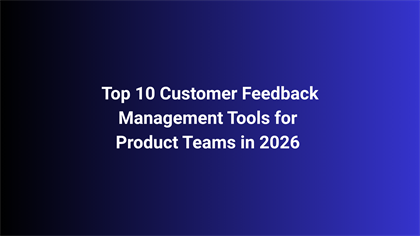
Effective maintenance is crucial for the smooth operation of any business. Integrated maintenance, combining CMMS (Computerised Maintenance Management System) and ERP (Enterprise Resource Planning) systems, takes this to a new level. Businesses can streamline their processes, enhance productivity, and reduce costs by merging these powerful tools.
Furthermore, integrated maintenance ensures all maintenance activities are efficiently managed and aligned with broader business operations. This holistic approach eliminates data silos, facilitates real-time decision-making, and optimizes resource allocation. So, the synergy between a CMMS and ERP system leads to fewer breakdowns, less downtime, and better overall performance.
Therefore, implementing integrated maintenance involves assessing current systems, choosing the right tools, and planning the integration process. It requires ongoing training and support to maximize benefits. Ultimately, integrated maintenance boosts efficiency and productivity, making it a valuable strategy for any forward-thinking business.
What is Integrated Maintenance?
Integrated maintenance means combining different systems to work together seamlessly. This approach improves how businesses manage maintenance tasks. However, two key systems involved in this process are CMMS and ERP systems.
CMMS System:
- Thus, a CMMS system helps manage maintenance activities.
- In addition, it keeps track of work orders and schedules maintenance tasks.
- Moreover, it stores information about equipment and maintenance history.
ERP System:
- An ERP system helps manage business processes.
- So, it integrates different departments like finance, HR, and supply chain.
- Therefore, it provides a unified view of the business operations.
Integration of CMMS and ERP:
- When CMMS and ERP systems work together, they share data.
- Thus, this integration improves decision-making and planning.
- Moreover, it streamlines maintenance tasks and boosts productivity.
Key Benefits of Integrated Maintenance
Integrated maintenance offers several benefits. So, let’s explore these benefits and see how they can improve efficiency and productivity.
- Improved Efficiency:
- Moreover, integrated maintenance streamlines processes.
- Therefore, maintenance tasks are scheduled and tracked more efficiently.
- Downtime is reduced, leading to smoother operations.
- Enhanced Productivity:
- Therefore, better resource allocation ensures optimal use of assets.
- Hence, maintenance schedules are optimized to avoid disruptions.
- Employees can focus on their tasks without interruptions.
- Cost Savings:
- Furthermore, integrated systems reduce repair costs by preventing breakdowns.
- Regular maintenance extends the lifespan of the equipment.
- Businesses save money on replacements and repairs.
Improved Efficiency
Therefore, integrated maintenance significantly improves efficiency. Thus, here’s how:
- Streamlined Processes:
- Maintenance tasks are automated and managed more effectively.
- Work orders are generated automatically, reducing manual errors.
- Reduced Downtime:
- Equipment is maintained regularly, preventing unexpected failures.
- Downtime is minimized, ensuring continuous operations.
- Better Data Management:
- Integrated systems store and manage data in one place.
- Access to accurate information helps in making better decisions.
Enhanced Productivity
However, productivity increases with integrated maintenance. So, consider these points:
- Better Resource Allocation:
- Resources are used more efficiently, avoiding wastage.
- Maintenance tasks are scheduled to ensure optimal use of resources.
- Optimized Schedules:
- Maintenance schedules are planned to minimize disruptions.
- Equipment is available when needed, boosting productivity.
- Focus on Core Tasks:
- Additionally, employees can concentrate on their primary responsibilities.
- Thus, maintenance tasks are handled efficiently, reducing distractions.
Cost Savings
Moreover, integrated maintenance leads to significant cost savings. Thus, here’s why:
- Lower Repair Costs:
- Thus, regular maintenance prevents major breakdowns.
- Businesses save money on expensive repairs.
- Extended Equipment Lifespan:
- In addition, well-maintained equipment lasts longer.
- Businesses don’t have to replace equipment frequently.
- Efficient Use of Resources:
- Additionally, resources are used effectively, reducing operational costs.
- Therefore, maintenance budgets are optimized, saving money.
How CMMS and ERP Systems Work Together
Therefore, understanding how CMMS (Computerised Maintenance Management System) and ERP (Enterprise Resource Planning) systems work together can help businesses improve efficiency and productivity. Moreover, both systems offer unique benefits, but integrating them unlocks even greater potential.
CMMS System
- However, a CMMS system manages maintenance activities.
- Thus, it schedules preventive maintenance tasks.
- Tracks work orders and repairs.
- In addition, it maintains records of equipment and parts inventory.
ERP System
- Therefore, an ERP system integrates all business processes.
- Additionally, it handles finance, HR, supply chain, and more.
- Provides a unified view of business operations.
- Moreover, it improves data accuracy and decision-making.
Integration Benefits
When integrated, CMMS and ERP systems enhance data sharing and streamline processes:
- Unified Data Management
- All information is in one place.
- Eliminates data silos.
- Improves data accuracy.
- Better Decision-Making
- Real-time data access.
- Informed decisions.
- Faster response to issues.
- Enhanced Efficiency
- Automated workflows.
- Reduced manual entry.
- Streamlined maintenance processes.
Key Integration Features
- Automated Workflows
- Maintenance requests flow seamlessly.
- Tasks are assigned based on availability.
- Resource Optimization
- Efficient use of labor and materials.
- Minimises downtime.
- Comprehensive Reporting
- Detailed reports on maintenance and operations.
- Identifies trends and areas for improvement.
Steps to Implement Integrated Maintenance
Furthermore, implementing integrated maintenance involves several key steps to ensure the successful integration of CMMS and ERP systems.
Assess Current Systems
- Evaluate existing maintenance processes.
- Identify gaps and inefficiencies.
- Determine integration needs.
Choose the Right CMMS and ERP Systems
- Select systems that meet business requirements.
- Consider scalability and compatibility.
- Ensure user-friendly interfaces.
Plan Integration Process
- Develop a detailed integration plan.
- Set clear objectives and timelines.
- Allocate resources and responsibilities.
Training and Support
- Train staff on new systems.
- Provide ongoing support.
- Update training materials regularly.
Monitor and Adjust
- Track performance and progress.
- Make necessary adjustments.
- Thus, continuously improve processes.
Best Practices for Maintaining Integration
Therefore, maintaining integration requires ongoing effort and attention to detail. Additionally, here are some best practices to ensure long-term success.
Regular System Audits
- Conduct regular audits.
- Check for data accuracy and integrity.
- Identify and resolve issues promptly.
Continuous Improvement
- Stay updated with system advancements.
- Additionally, implement new features and updates.
- Seek feedback from users.
Technological Advancements
- Keep up with industry trends.
- Adopt new technologies as needed.
- Enhance system capabilities.
Collaborative Approach
- Moreover, fosters collaboration between departments.
- Encourage open communication.
- Share insights and best practices.
Conclusion
However, integrated maintenance offers significant benefits for businesses. By combining the strengths of ERP and CMMS systems, companies can achieve improved efficiency, enhanced productivity, and substantial cost savings. Streamlined processes reduce downtime, while better resource allocation optimizes maintenance schedules. Thus, this integration also ensures accurate data management and informed decision-making, leading to more effective operations.
Therefore, adopting integrated maintenance requires careful planning, the right system selection, and ongoing training. However, the results are worth the effort. Regular audits and continuous improvement help maintain the system’s effectiveness. Embrace integrated maintenance today to unlock your business's full potential. The synergy between CMMS and ERP systems creates a more efficient, productive, and cost-effective operation, driving long-term success and sustainability.
Leave a Reply
You Might Like Also

Website Design Mistakes That Hurt Your Business

Brooklyn's Flat Roofing Professionals















